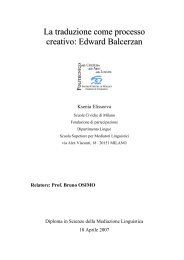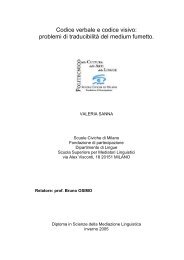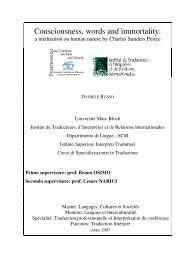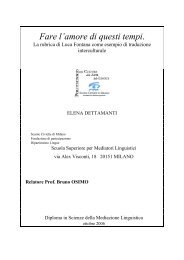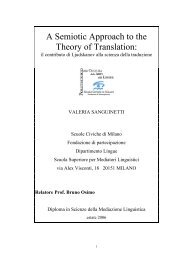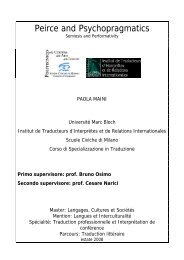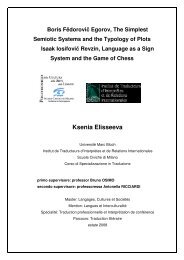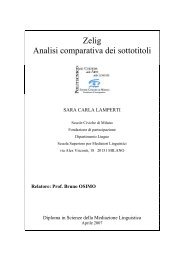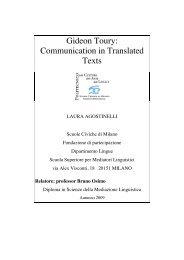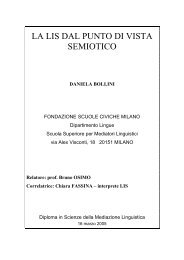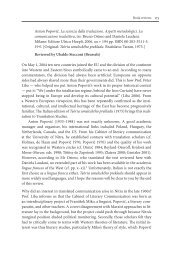Alice in Wonderland - Bruno Osimo, traduzioni, semiotica della ...
Alice in Wonderland - Bruno Osimo, traduzioni, semiotica della ...
Alice in Wonderland - Bruno Osimo, traduzioni, semiotica della ...
You also want an ePaper? Increase the reach of your titles
YUMPU automatically turns print PDFs into web optimized ePapers that Google loves.
The reference to Shakespeare is adapted by Enzensberger (DE-ENZ) and<br />
generalized by Bublitz (DE-BUB) and Remané (DE-REM). The problem with<br />
adaptation here is that the pictures of Goethe a reader may recall do not<br />
show him <strong>in</strong> this particular posture. Therefore, the appellative function (i.e.,<br />
to make the receiver remember someth<strong>in</strong>g known) works neither with<br />
Goethe, nor with famous poets (DE-BUB) or grand philosophers (DE-REM).<br />
A translation like grand philosophers could evoke Rod<strong>in</strong>’s Penseur, but then<br />
the translator would have to substitute pictures by images. This is why<br />
Teutsch (DE-TEU) and the Brazilian translator omit the reference altogether.<br />
Comparisons are usually <strong>in</strong>tended to clarify the verbal description and not to<br />
mystify it. Some researchers assume that the comparison was a private<br />
joke between the author and his first addressees (the Liddell sisters),<br />
because it is difficult to f<strong>in</strong>d a picture show<strong>in</strong>g Shakespeare precisely <strong>in</strong> this<br />
position. Nevertheless, a translator may want to make the target text<br />
“work” for its addressees.<br />
In the translations of Caucus race, some translators try more or less<br />
faithfully to reproduce the mean<strong>in</strong>g of the word (DE-BUB, ES, IT), others<br />
45



